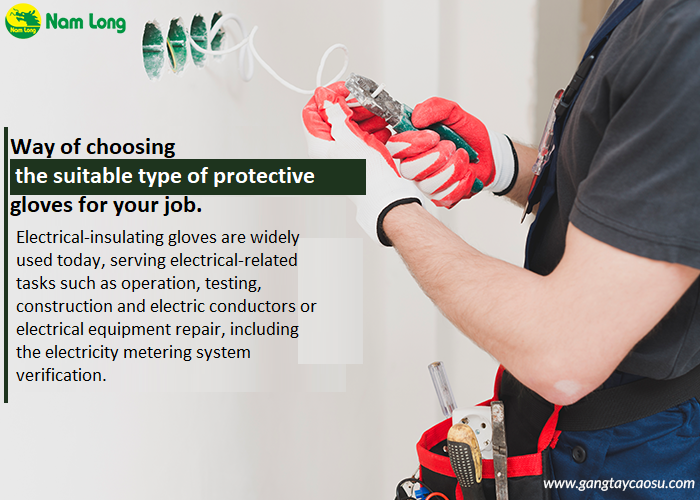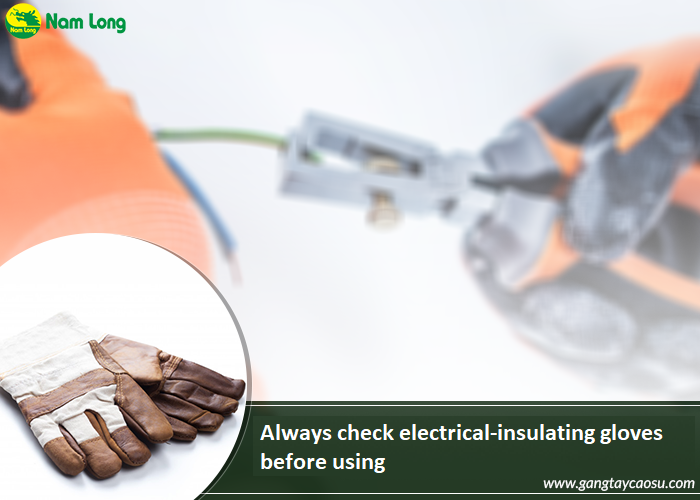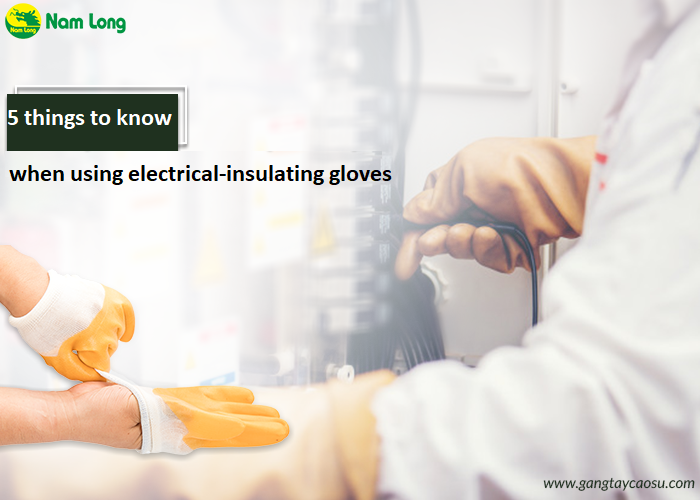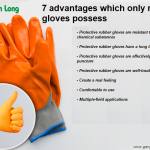Electrical-insulating gloves are the most important protective equipment when hands are exposed to electricity. However, to ensure the highest safety when using, users need to understand the usage of them beforehand.
The electricity industry is one of the potential industries with many hazards. Therefore, people working in this area should be fully equipped with protective equipment, most commonly electrical-insulated gloves. However, there is a fact that not all electrical-insulating gloves are the same and can be used by anyone. This also depends on the job features and the source of electricity that workers are exposed to. Therefore, to avoid unintended risks, users need to know the necessary information about the protective equipment before using.
1/ The construction of the electrical-insulated gloves.
Knowing the structure of the electrical-insulating gloves you are using will help you understand how the device works, thereby having a good way to handle problems in working.
The market of electrical-insulating protective gloves is quite diverse. Each type will have different structure as well as the usage. In general, the most popular line is still the rubber-insulating gloves, meaning that they will be covered by an insulating layer of rubber. They are basically composed of 3 layers:
- Rubber-insulating layer:
Depending on the voltage level and protection ability, this layer will have the suitable thickness and be combined with different materials. They are usually made of durable rubber, used for all grid works.
- Lining gloves:
This layer aims to reduce the discomfort of wearing electrical-insulating gloves, keeping your hands warm in cold weather and absorbing sweat in hot weather.
- Protective leather layer:
This layer aims to protect your hands from cuts, scratches and puncture during work.
2/ Way of choosing the suitable type of protective gloves for your job

Electrical-insulating gloves are widely used today, serving electrical-related tasks such as operation, testing, construction and electric conductors or electrical equipment repair, including the electricity metering system verification. Besides, electrical-insulating gloves do not exclude electrical-repairing jobs in households.
Due to the diversity in the application, the market for electrical-insulating gloves has also become abundant. Basically, electrical-insulating gloves are divided into 3 categories including low-voltage, medium-voltage and high-voltage insulating gloves with different KV index. Therefore, depending on the nature of each job, particularly the level of safe insulation, the user needs to choose accordingly.
3/ Following all safety regulations when using electrical-insulating gloves
Each line of protective gloves will have their own rules in using, such as regulations on periodic quality-verification and expiry date should be discarded to ensure maximum safety for users. These regulations correspond to each field and business units that employees will be equipped before conducting the work. However, if you work independently and do not know these rules, you need to learn carefully to avoid unintended risks.
4/ Always check electrical-insulating gloves before using

Electrical-insulating gloves in use cannot avoid risks like the surface of the gloves being destroyed by sharp objects, copper cables, creating small holes without being discovered by users. Therefore, to ensure safety, you should carefully check the level of safety before using and avoid subjectivity.
Specifically, you can check whether electrical-insulating gloves have holes or not by pumping air into the gloves, keeping one tip closed and checking with the other hand. In addition, for safety, your gloves should be checked professionally every 6 months, especially when being exposed to high voltage power.
5/ How to preserve electrical-insulating gloves
Electrical-insulating gloves are mainly made of rubber material. Therefore, you need to understand the properties of this material. They are easily damaged by prolonged exposure in acidic environments, high temperatures, or sharp objects. Therefore, to preserve gloves as well as ensure their safety for using, you need to know how to preserve them.
- After using electrical-insulating gloves, they should be stored in a cool place without direct exposure under the sunlight. You should not fold the gloves because this will reduce the ability of insulating right at the fold line for a long time.
- When transporting electrical-insulating gloves, there must be protective bags and do not leave them with other objects to avoid collision and puncture.
- When working, you should be cautious with stains, grease, and sharp objects which have high puncture ability.
Insulating protective gloves are considered as an indispensable thing for those working in the electric environment or direct contact with the electricity. Therefore, besides complying with regulations, equipping yourself with the necessary knowledge about protective equipment is also a way to help employees ensure their own safety and calmly handle surprising problems. Not to mention, this also brings a feeling of safety and more professional when working.
>>> See more: 7 reasons to use rubber gloves for cooking and washing dishes
Please contact us:
Address: 103 Tran Van Kieu Str, Ward 10, District 6, Ho Chi Minh City.
Email: namlongco.gloves@gmail.com
Tel: (+84)28.3755.4772 – (+84)983.101.434









